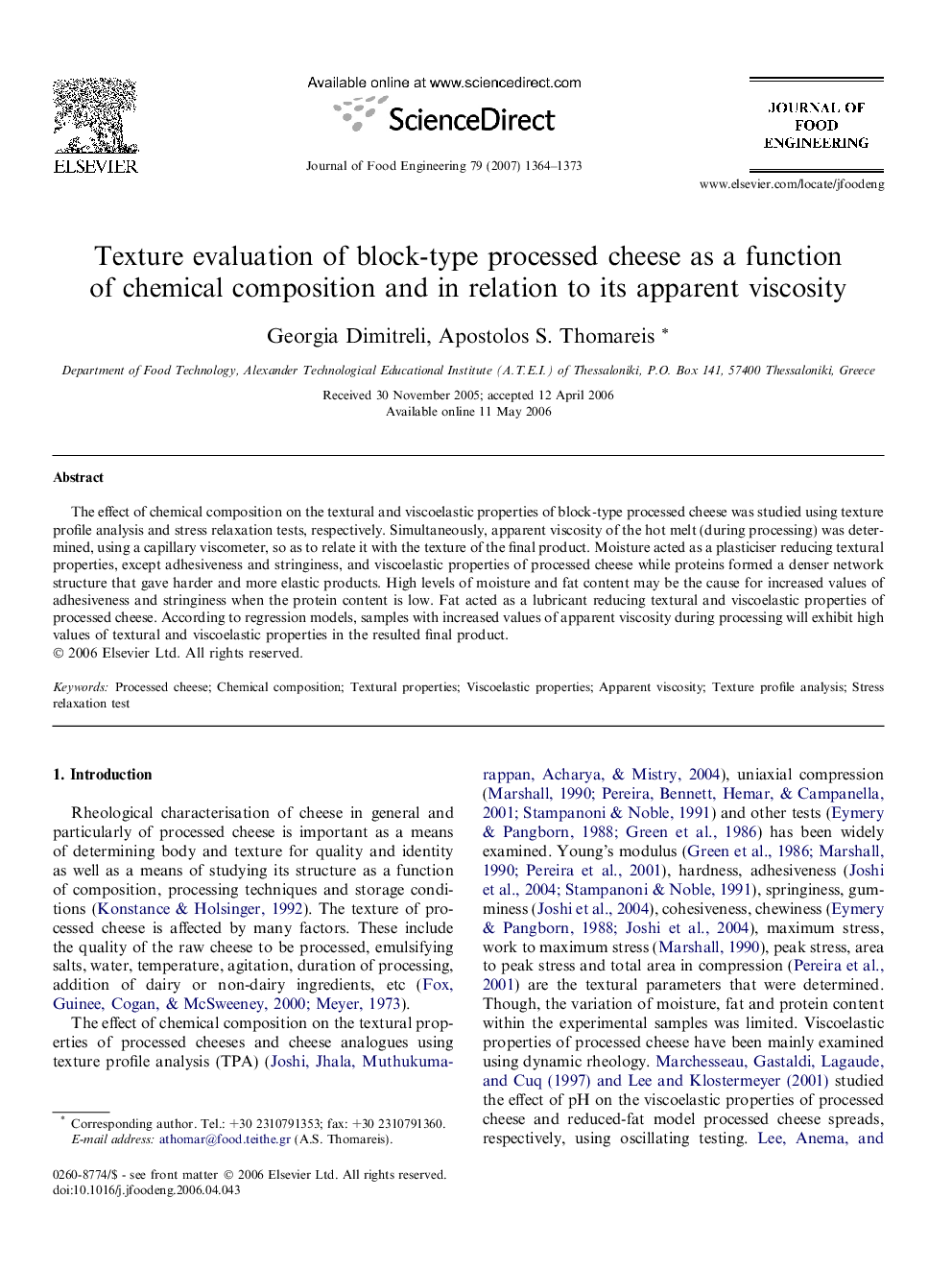| Article ID | Journal | Published Year | Pages | File Type |
|---|---|---|---|---|
| 226095 | Journal of Food Engineering | 2007 | 10 Pages |
The effect of chemical composition on the textural and viscoelastic properties of block-type processed cheese was studied using texture profile analysis and stress relaxation tests, respectively. Simultaneously, apparent viscosity of the hot melt (during processing) was determined, using a capillary viscometer, so as to relate it with the texture of the final product. Moisture acted as a plasticiser reducing textural properties, except adhesiveness and stringiness, and viscoelastic properties of processed cheese while proteins formed a denser network structure that gave harder and more elastic products. High levels of moisture and fat content may be the cause for increased values of adhesiveness and stringiness when the protein content is low. Fat acted as a lubricant reducing textural and viscoelastic properties of processed cheese. According to regression models, samples with increased values of apparent viscosity during processing will exhibit high values of textural and viscoelastic properties in the resulted final product.
